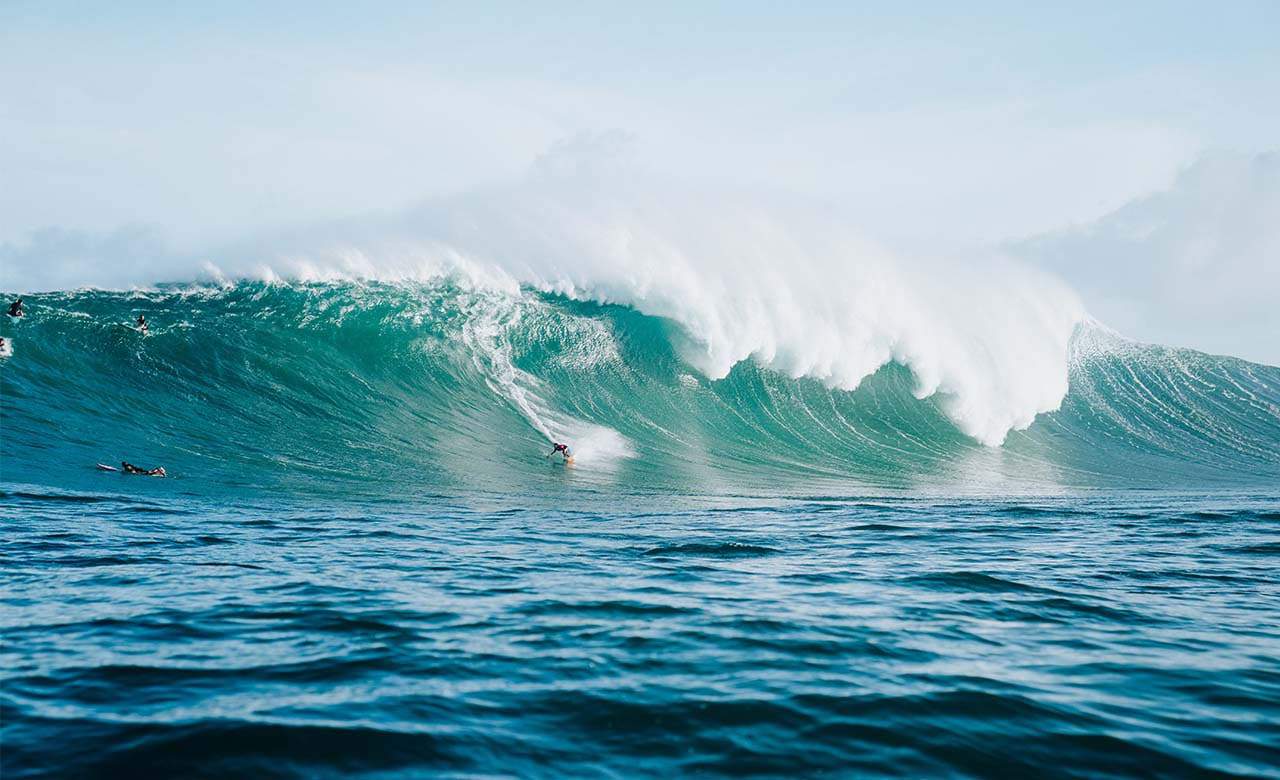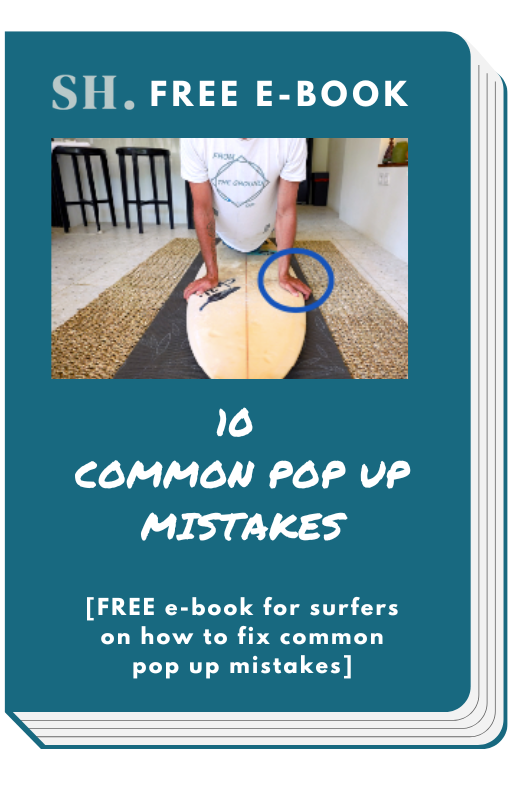Big wave surfing is not for beginners. But how do we get there?
A big board, a mental commitment and a careful analysis of what your heart is telling you will get you into some big waves. This is a quick guide into stepping out of your comfort zone.
There are very few big wave surfers on the planet
The number of surfers who consistently charge Nazaré or Jaws is a tiny percentage of people who surf.
There are, however, many people who are prepared to push it and get out of their comfort zone when that first big west or north swell comes through. Whether your top-end is 6-foot or 12-foot, the mental and physical preparedness is the same.
Prepare yourself for surfing bigger waves
Listen to your heart. If you really want to go, but you’re really, really scared, listen and see if there is a reason. Maybe you have an old injury, or perhaps you’re suffering from a minor illness, a bit of flu. If there is serious doubt, then listen. If, however, you are nervous but equally excited, then you must paddle out!
It’s ok to have a board that is too big, but don’t paddle out on a board that’s too small. Find a board big enough for you to be really comfortable on while paddling for waves or paddling away from a set. If you’re under-gunned and don’t have enough board, you’re not catching waves, which is a total waste of time.
Decide that you’re going to go for it. Make a commitment in your mind that when a wave comes, you will put your head down and go. Remember, ‘if you don’t go, you’ll never know,’ and ‘hesitate and it’s too late.’ Those two mantras will give you strength and fortitude to get over the ledge.
It’s better to go, and wipeout, than to not go at all. your first wave is the deal-breaker. The more you pull back, the more nervous you’ll get. Once you have taken your first wave, whether it is a make or a slam, the pressure is off, and you’re in the game.
If you do have a heavy wipeout, the most important thing to do is to relax. Panicking depletes energy and uses oxygen. If you have your board, hold on to it. If you lose your board, tread water, and try and use the whitewater to wash you to shore. If you need help, put one hand in the air.
Absorb the emotions. You need to remember the feeling. When the waves get big again, your memories will tell you what to do and help you to decide on a plan of action. Maybe your memories tell you not to go, or perhaps they ask you to use a longer board. Possibly they ask you to remember something about the characteristics of your big-wave gun. Either way, that voice is the voice of experience, and it’ll tell you what to do. When you’re in the moment, amongst giant surf, take the time to reflect and acknowledge your emotions.
Improve your technique and confidence before moving into bigger waves
Then the closing point is not really any particular advice but is more about surfing in general. If you’re not having fun, then you’re doing something wrong. Your surfing experiences must make you stoked. There are many ways to improve your surfing skills, but you must leave the water with a big grin on your face, even after a bad surf. If getting out of your comfort zone is too distressing, too negative, then go back to what you’re used to, and what gives you the most enjoyment, because that’s where you need to be.
Big Wave FAQ
Your perception of a big wave depends on your experience as a surfer and the conditions you’re used to surfing in. Big waves can vary, but generally, 20 feet or higher are considered big waves in the surfing community.
As surfers, we rely on weather forecasts, swell reports, and local knowledge – to determine if the waves will be too big. Factors such as strong winds, a significant swell, and changing tides can indicate the likelihood of big waves. Be sure to understand the forecast and study the lineup before paddling out. Understand where your limits are at.
The duration of being held under a big wave can vary depending on factors like wave size, water conditions, and individual circumstances. Surfers must develop good breath-holding techniques and learn how to handle themselves in challenging situations to minimize the hold-down time during a wipeout.
Beginners should focus on developing their skills and experience in smaller, more manageable conditions before attempting to surf bigger waves. It’s a process where you gradually need to expand your technique and confidence step-by-step (wave-by-wave). Working with an experienced surf instructor can be beneficial in learning how to navigate bigger waves safely.
Overcoming the fear of big waves takes time and practice. Gradually exposing yourself to larger waves, building confidence through regular surfing, and understanding the ocean’s dynamics can help. Learning proper safety measures, such as knowing when to paddle out and when to avoid certain conditions, can also boost confidence and reduce fear. At the end of the day it takes time to build up your experience and confidence, so if in doubt, don’t paddle out.
Choosing the right big wave surfboard depends on factors such as; your skill level, the wave conditions, and your personal preference. Big wave boards are typically longer, thicker, and more buoyant than standard surfboards. Consulting with knowledgeable surf shop staff or experienced surfers can help you find a suitable board that matches your needs and abilities.


